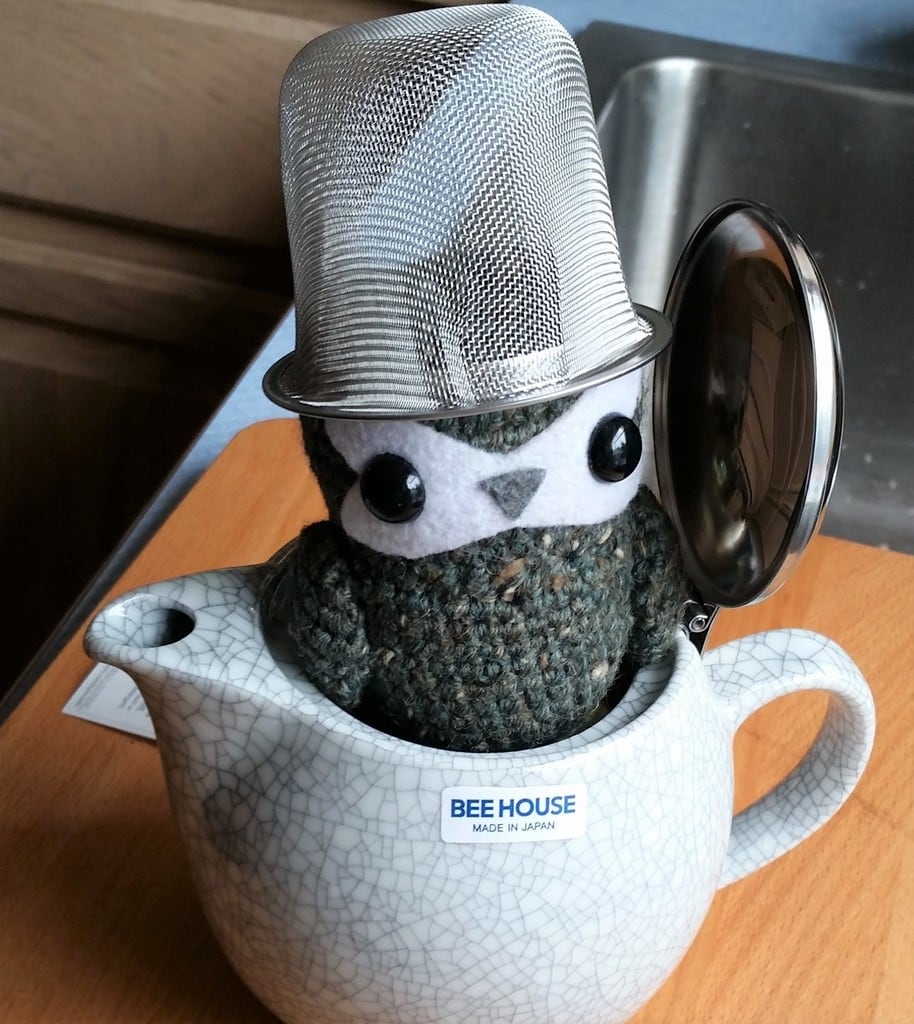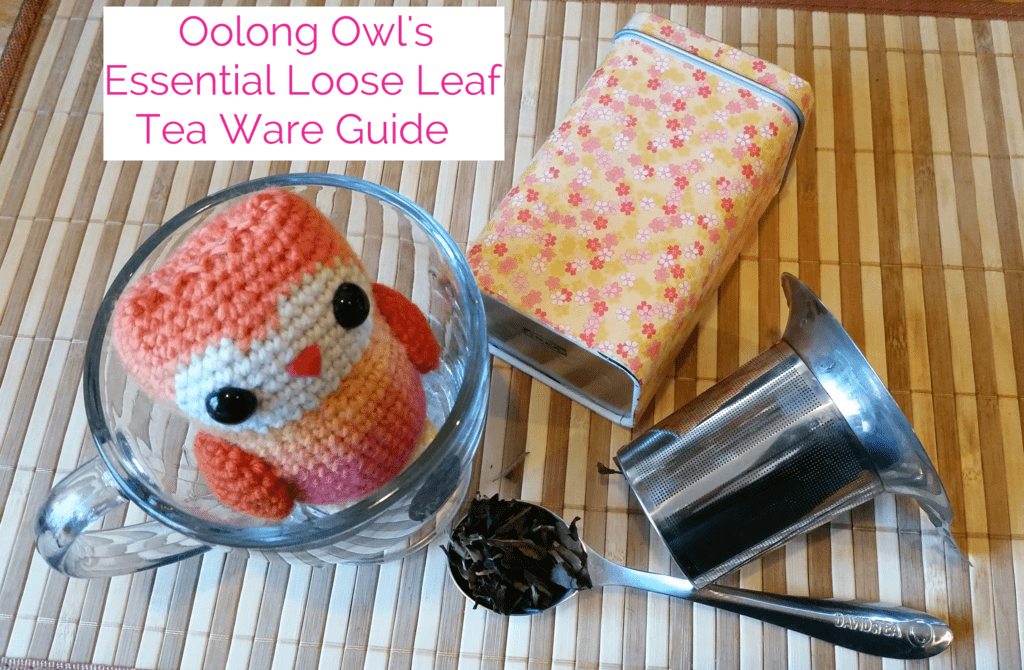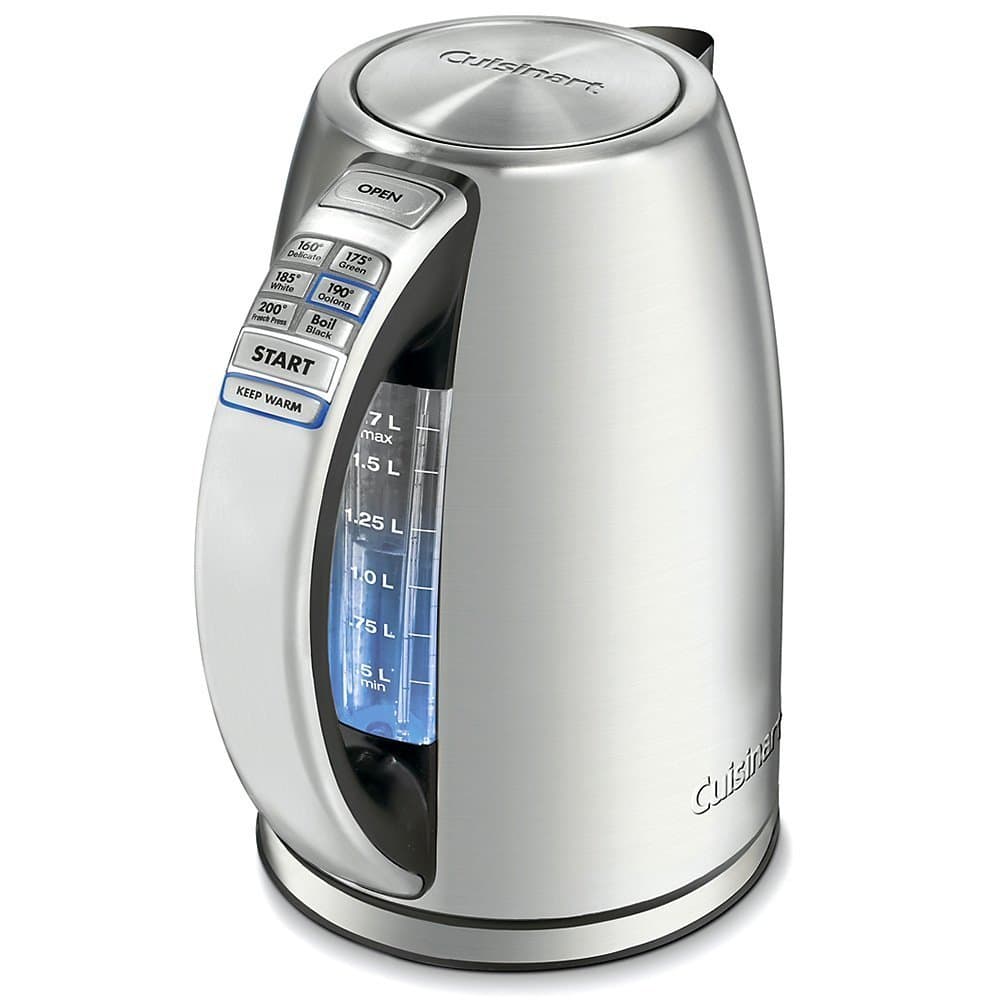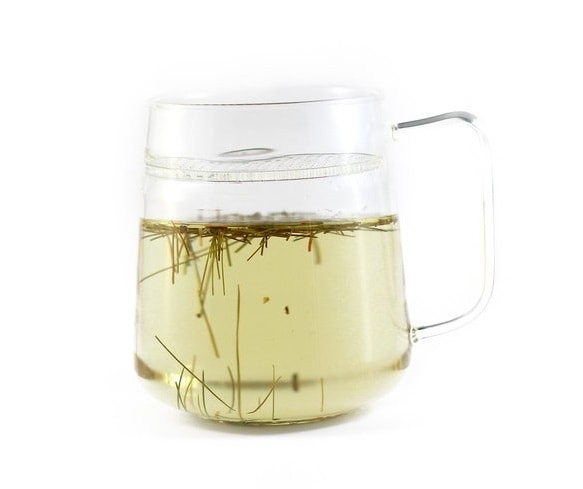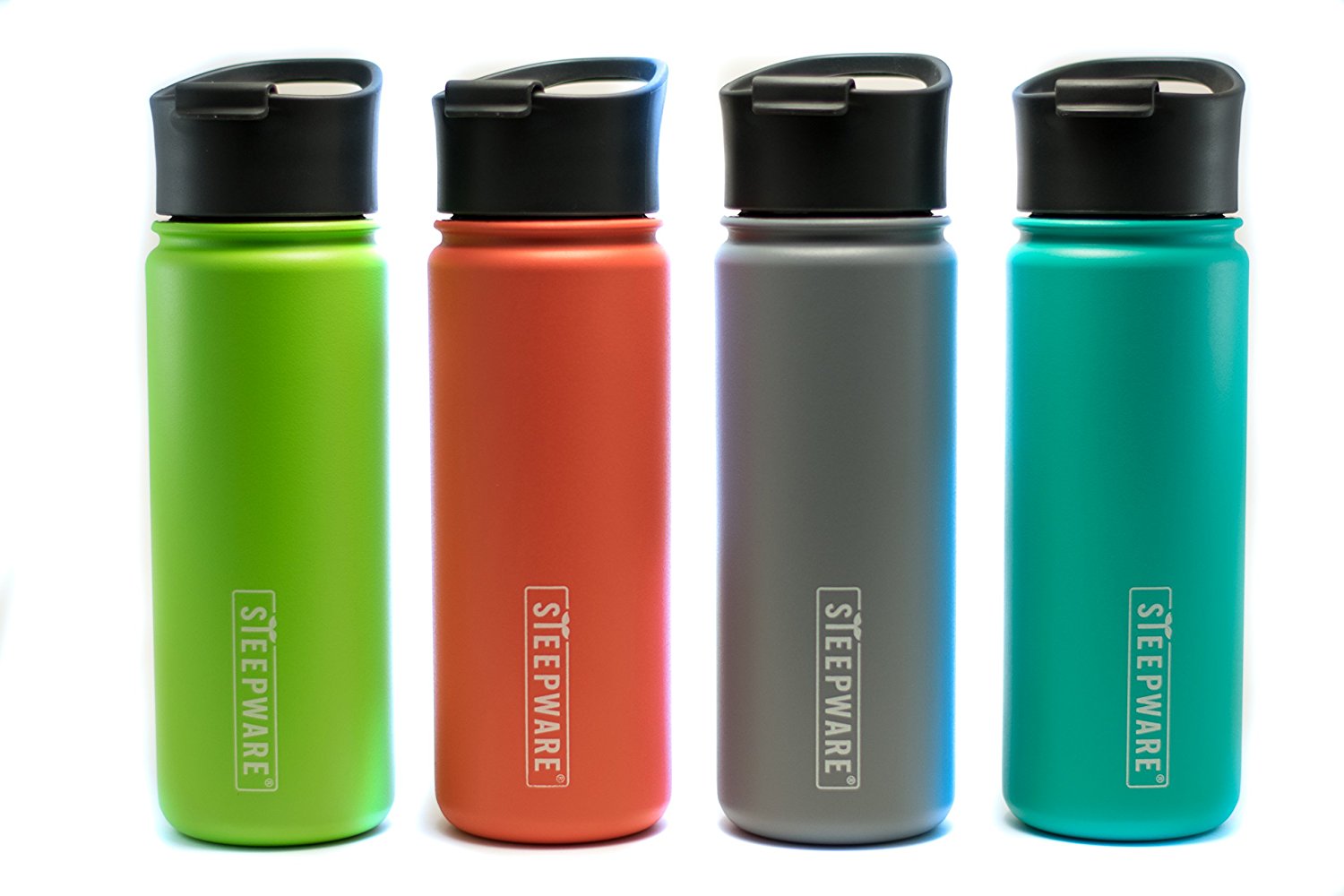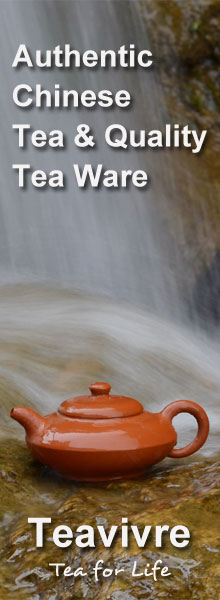Oolong Owl is back with more Tributary Tea’s oolongs! In my previous post, I drank their Nangang Baozhong, which was excellent. I have a sample collection of their oolongs I thought were captivating from their website descriptions. That said, the teas today are Shanlinxi Roasted, Muzha Tieguanyin Spring, and Qilaishan High Mountain.
Shanlinxi Roasted Oolong from Tributary Teas
Tributary Tea’s Shan Lin Xi Roasted Oolong is described to have a medium roasting job. The dry leaf has a sweet and roasty scent.
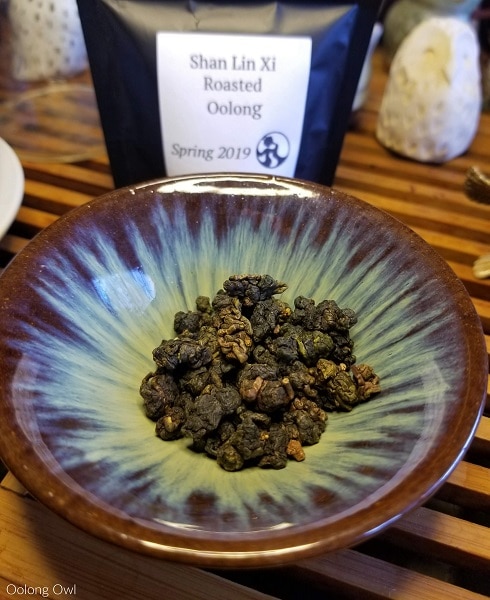
I used (and for all the teas in this review) 1 gram of leaf per 15ml of vessel size, gongfu steeped in boiling water. I did a single rinse to open up the tightly rolled oolong. The hot leaf starts off smelling sweet and baked goods but goes dark and stronger roast scent.
First Infusion: Wow, that is sweet! Roasted Shanlinxi sips in bit thin bodied here, but sweet and toasty. It has notes of heavy mineral water, rock sugar, and roast. The aftertaste takes awhile to show up giving a brief essence of floral but mostly roast.
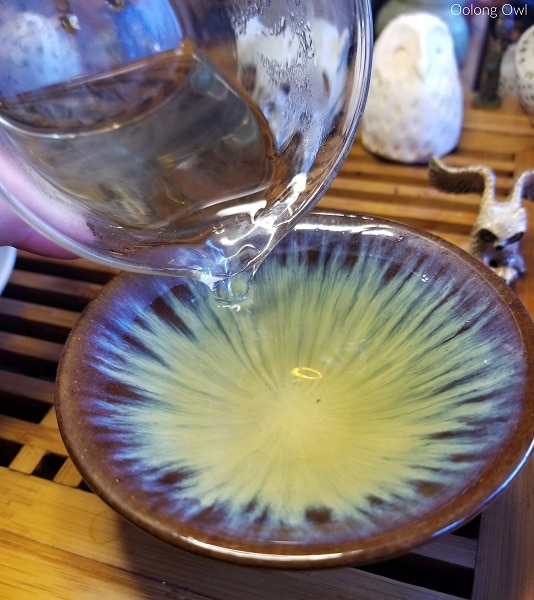
Second and Third Infusion: Shanlinxi Roasted hit prime drinking as it finally released a lot of flavors. Shanlinxi sips in roasted and mineral but then shifts to a deep tulip floral. The floral note lingers after each sip, leaving a buttery feel in the mouth. The roast job here is interesting. Often you choose between roast or floral, but this tea has both powerfully.
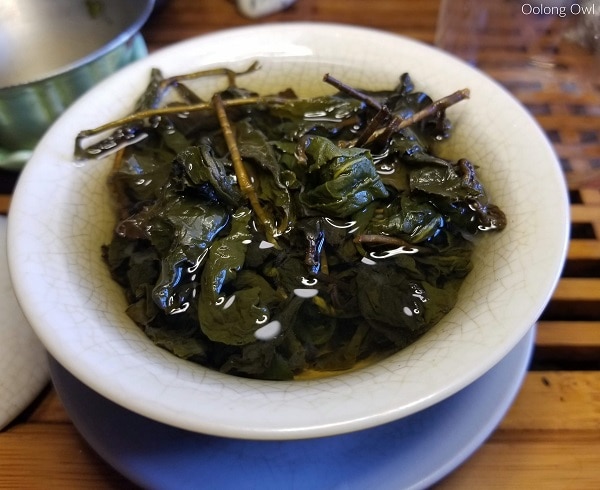
Fourth, Fifth, and Sixth Infusion: Roasted Shanlinxi switched again sporting a sweeter side with an almost tart plum note, and a whole bunch of tulip floral. The tea is bordering bitter here as the flavor intensity is strong.
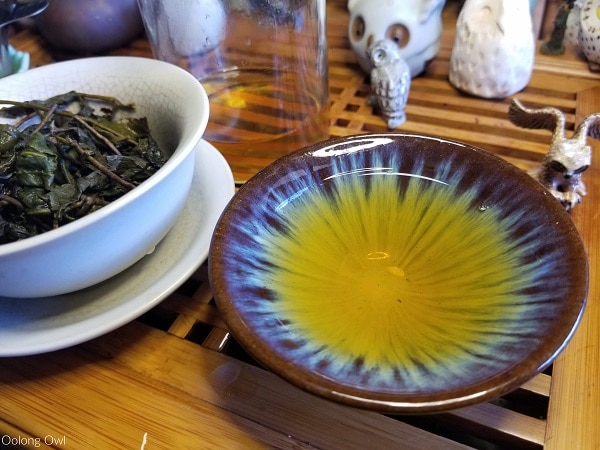
Seventh and Eighth Infusion: I went in for the long infusion here. Shanlinxi Roasted oolong is very sweet and buttery but has a bitter finish. After a couple of sips, the strong floral tulip aftertaste arrives again.
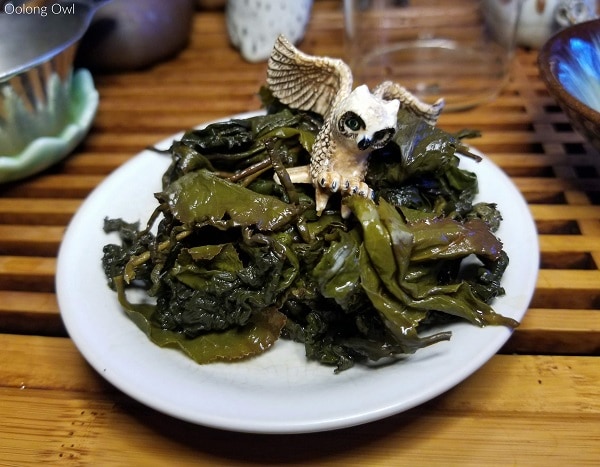
Comments
Tributary Tea’s Shanlinxi Roasted Oolong was an excellent tea to try and an interesting tea to the last steep. I think it needs some settling time as that roast is heavy-handed, but somehow still doesn’t overtake the floral notes. It did emphasize the sweetness in the Shanlinxi which made for a good pairing.
For my tastes, I’d wait a few months or a year to settle down the roast but it is fine to drink now if you really love your roast.
Muzha Tieguanyin from Tributary Teas
I love a good Muzha Tieguanyin. Tributary Tea’s Muzha Tieguanyin from Spring 2019 is a 40% oxidation with an 80 hour roast. The unsteeped leaves smell roasted with a touch of sour.
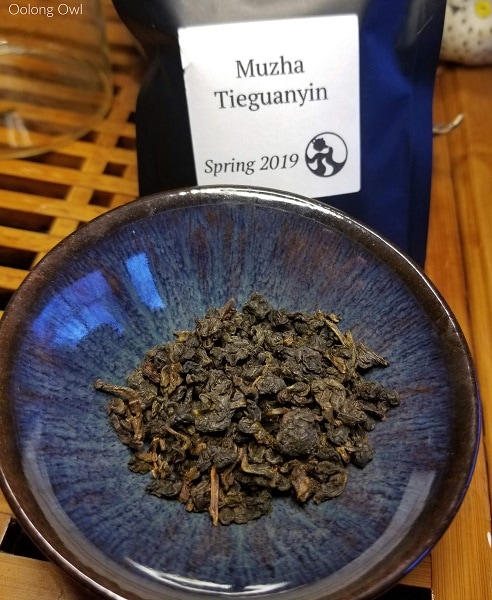
After a rinse, Muzha Tieguanyin has a creamy but roasted nutty shell scent.
First and Second Infusion: My first impression is this is a good Muzha Tieguanyin. Tributary Tea’s Muzha Tieguanyin sips in nutty peanut shells and sweet, with a tangy fruity currant finish. As I wait for my water to boil, I get an aftertaste of licking rocks. At the second steep, I am noticing this tea drinks like cement, adding a sinking weight feeling as I drink. The texture has an oily feeling in the mouth.
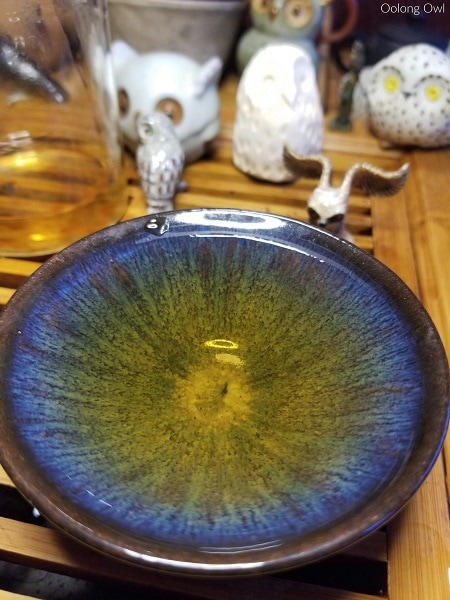
Third, Fourth, and Fifth Infusion: Muzha Tieguanyin now shifted to have a creamy vanilla note, blurring with the rocks, nuts, and fruits. The aftertaste only shows if I take my time drinking this, which is a fruity mash of currants, cherries, or nectarines – my brain can’t decide.
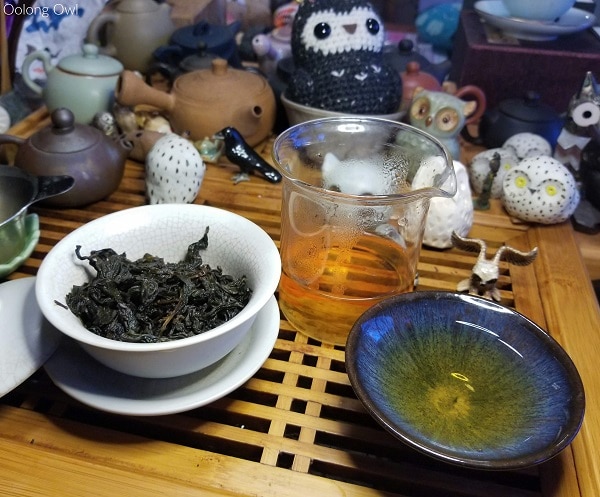
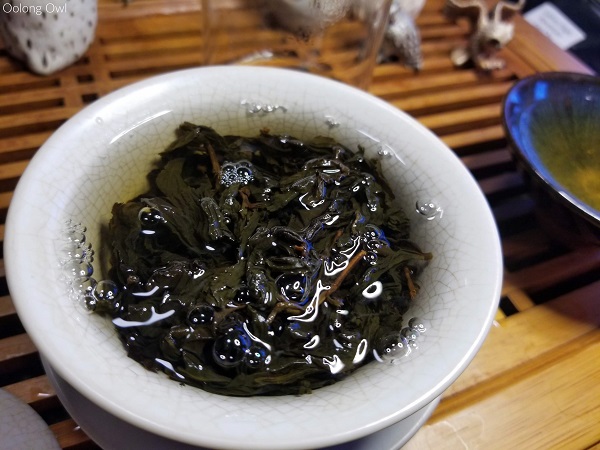
Sixth, Seventh, Eighth, and Ninth Infusion: As this tea fades in flavor, it has a mineral rocky taste with a fruity sweet finish. I accidentally oversteeped the 7th infusion and it came out very fruity but only a touch of bitterness that was concentrated fruit. Muzha Tieguanyin’s aftertaste has an interesting vanilla note to it.
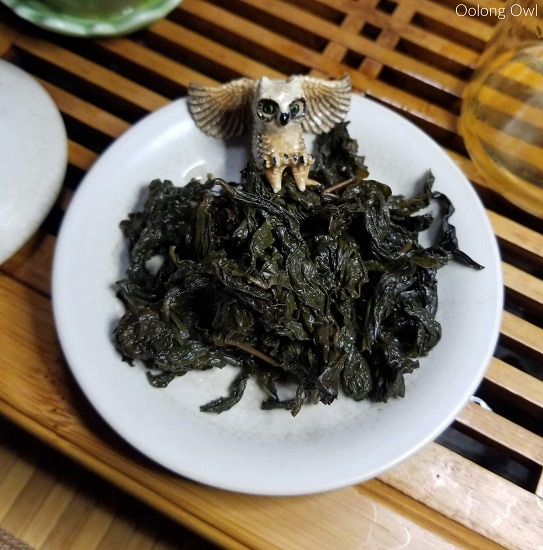
Comments
Tributary Tea’s Muzha Tieguanyin is one of the better Muzhas I’ve had in a while. If you love Taiwanese oolongs with lots of body and feeling, this one has it.
I love the complexity Muzha Tieguanyin has, all with satisfying flavor, oily body, and good body feel.
Qilaishan High Mountain Oolong from Tributary Teas
Qilaishan is close to Li Shan, but Qilaishan is foggier and less sunny though still is high elevation. This particular tea is from Spring 2019 and of the creamy Jin Xuan cultivar, picked to counter the rougher growing conditions.
Qilaishan High Mountain oolong has a strong buttery smell on the leaves, whereas the steeped leaf is grassy buttery and floral scented.
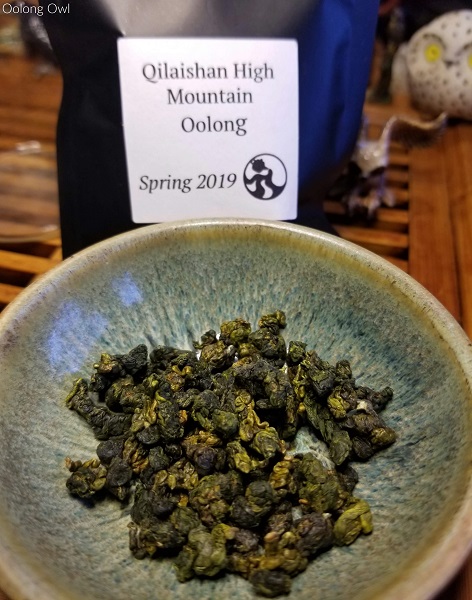
First and Second Infusion: Early infusions Qilaishan oolong is light, minerally, and sweet. There is a buttery texture to it with a finish of sweet grass. The second infusion opened up a bit more buttery milky flavor and thicker texture of drinking cream. After finishing the second infusion, I got a bit of a fruity aftertaste.
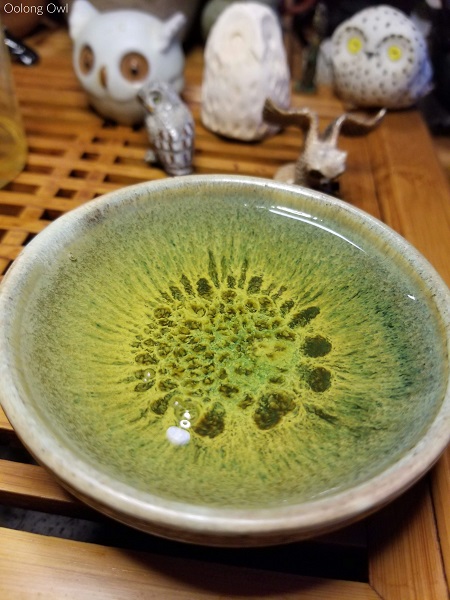
Third and Fourth Infusion: Qilaishan oolong is balanced well with mineral, buttery, sweet grass, and white nectarine flavor. There is a touch of astringency after each sip but the thick buttery texture hides it well.
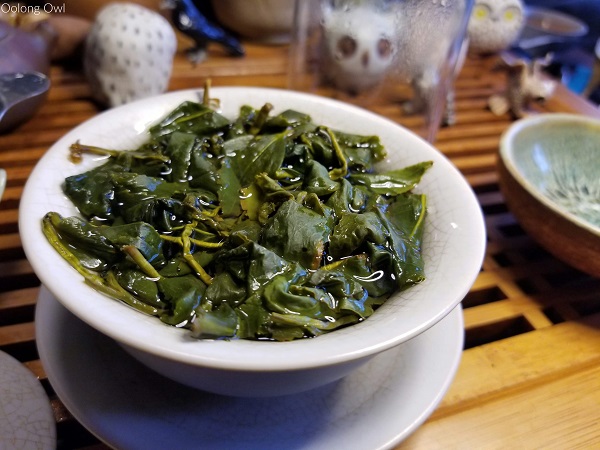
Fifth and Sixth Infusion: For the final infusions, Qilaishan oolong is starting to get more dominated by astringency and some bitterness, but the flavor here is soft minerals, nectarine, and butter, with the sweetgrass going stewy bitter. The finish leaves a fresh grassy flavor behind before opening back to nectarine again. The sixth infusion was very light with a bit of stewy grass and butter.
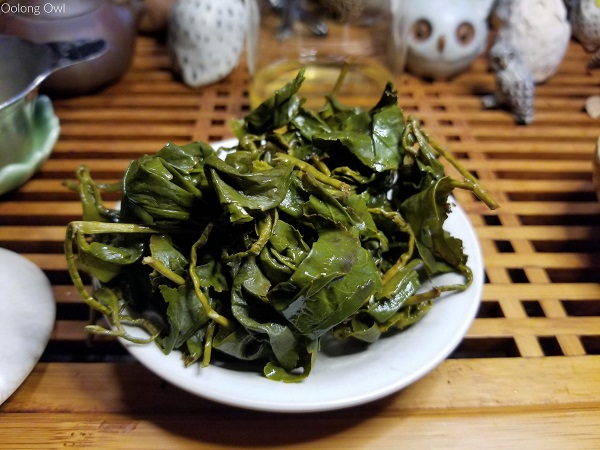
Comments
Tributary Tea’s Qilaishan High Mountain Oolong was a surprise hit for me. It is a more subtle tea but checks the boxes for intriguing flavor, dense texture, well rounded, and lovely aftertaste. The Jin Xuan cultivar was a good choice, though I am interested in trying Qingxin to compare some time. Either way, High Mountain Oolong fans should give Qilaishan a try.
(teas provided for review)






